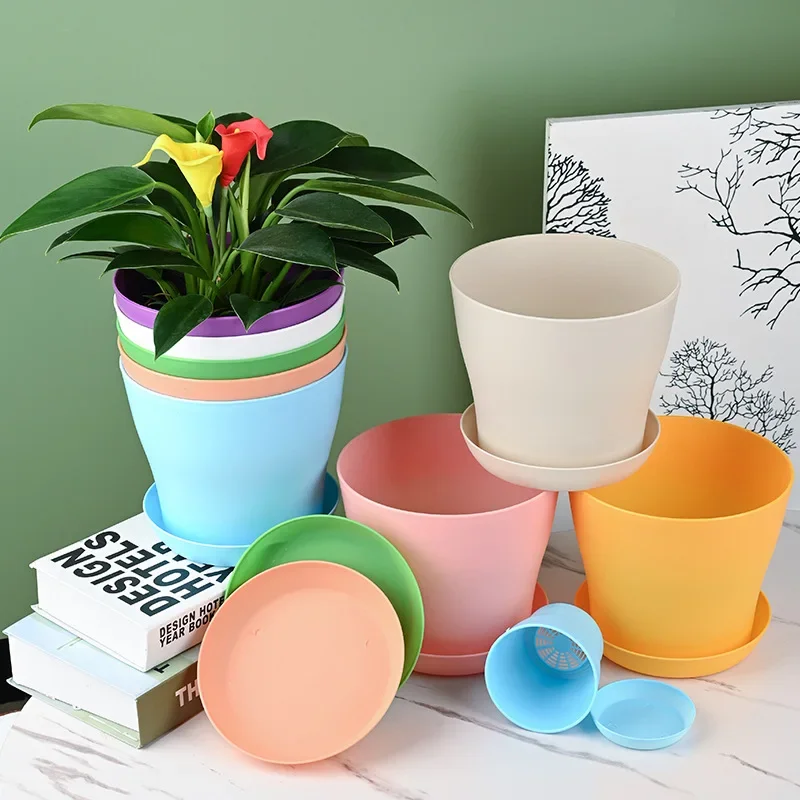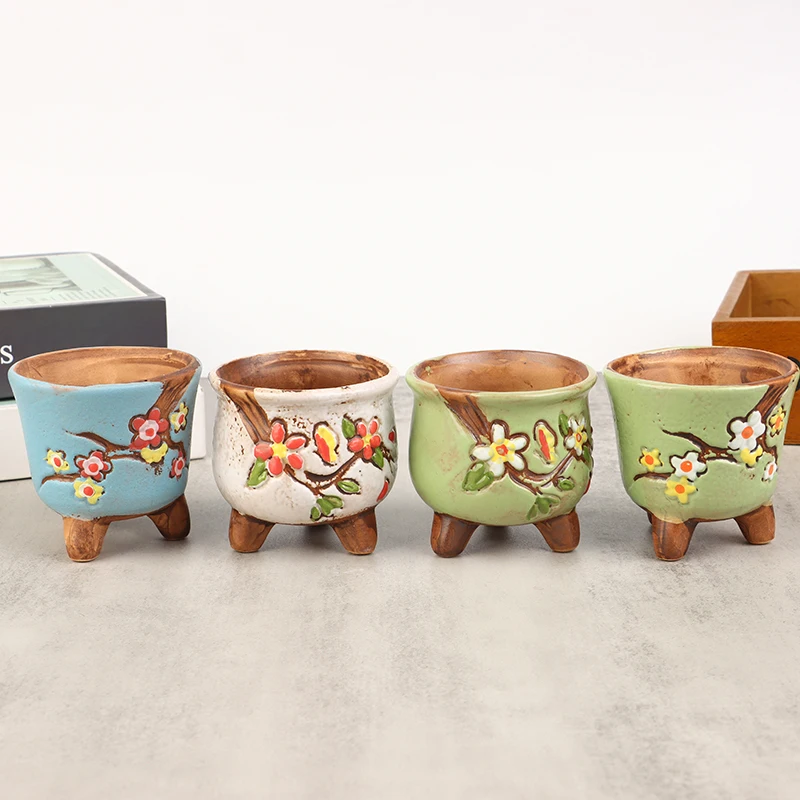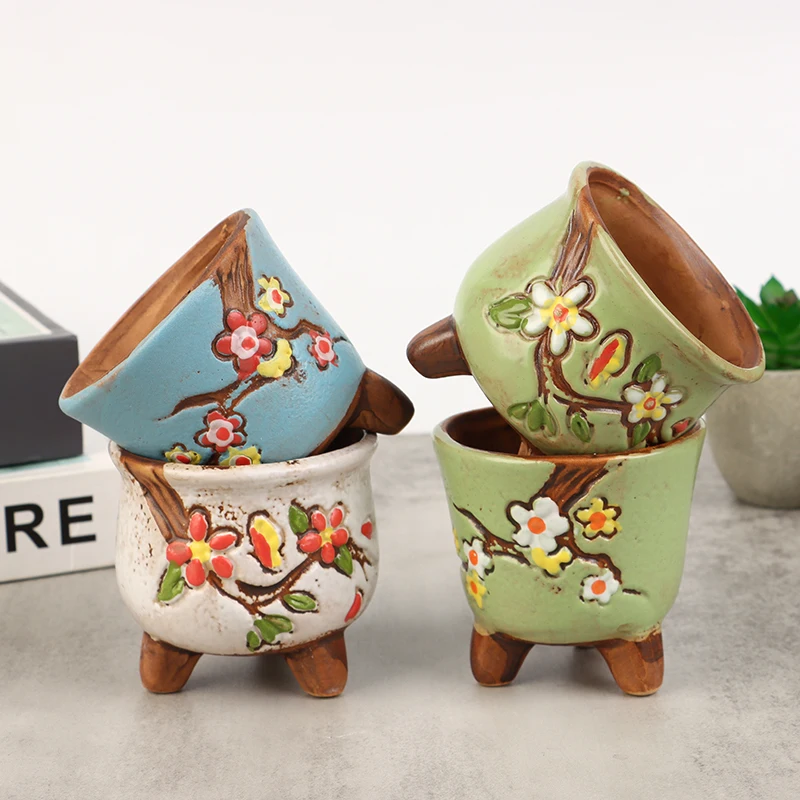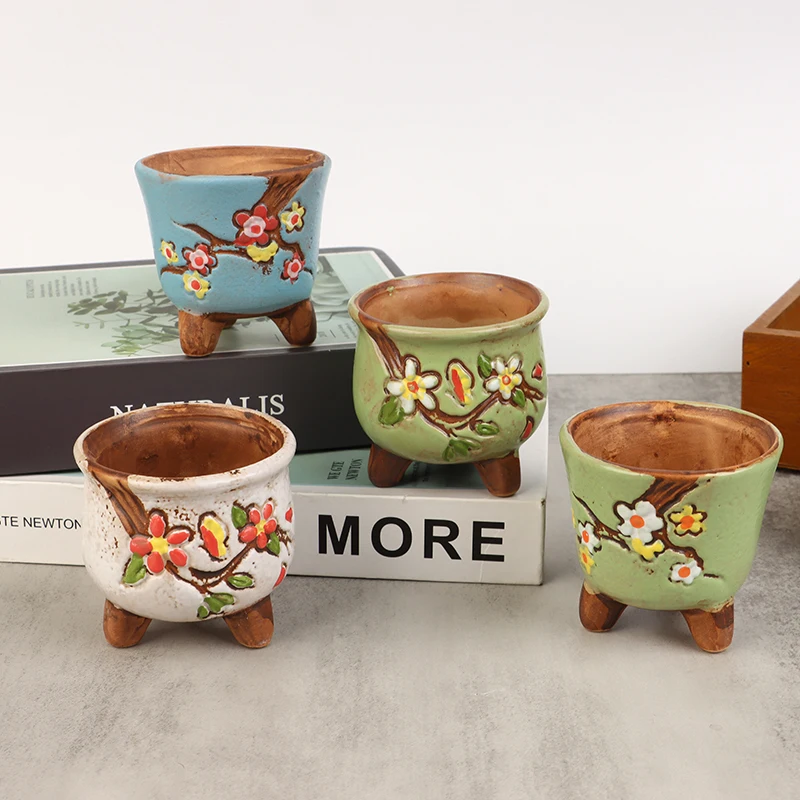Gardening is more than just planting seeds and watching them grow; it’s an art form that allows for personal expression and creativity. One imaginative and effective way to add a splash of personality to your garden is by customizing your flower pots with spray paint. This article explores a variety of creative ideas for spray-painting flower pots, offering practical tips and inspiration to transform your garden into a vibrant outdoor oasis.
The Appeal of Spray Painting Flower Pots
Spray painting flower pots offers a quick and easy method to elevate the aesthetic of your garden. The versatility and wide range of colors available in spray paints make it possible to achieve virtually any look you desire. From bold and modern to rustic and vintage, the possibilities are endless.
One of the major benefits of using spray paint is its even application, which helps to achieve a professional-grade finish with minimal effort. Unlike traditional painting methods that may result in brush strokes or uneven coverage, spray paint delivers a smooth and uniform layer. This makes it an ideal choice for both novice and experienced DIY enthusiasts.
In addition to enhancing the visual appeal, spray painting can also extend the lifespan of your flower pots. A good quality spray paint not only adds a layer of color but can also act as a protective coating against the elements. This is particularly beneficial for pots made from materials like terracotta, which can absorb moisture and deteriorate over time. By sealing them with spray paint, you provide an additional barrier against weathering, ensuring they last longer.

Preparation: The Key to Success
Proper preparation is crucial for achieving the best results when spray painting flower pots. Start by selecting the pots you want to transform. Clean them thoroughly to remove any dirt, dust, or residue that could interfere with the paint adhering smoothly. For old or heavily used pots, a light sanding may be necessary to remove any rough spots or peeling paint. Washing them with soapy water and rinsing well ensures a clean surface for the paint to stick to.
After cleaning, let the pots dry completely. Moisture can interfere with the paint application, leading to bubbles or uneven coverage. While the pots are drying, set up your painting area. An outdoor space is ideal, but if that’s not possible, a well-ventilated indoor area will suffice. Protect your surroundings with drop cloths or plastic sheeting to catch any overspray. Use painter’s tape to mask off any sections of the pot you want to keep paint-free, such as rims or bases.
Choose the right type of spray paint for your project. For outdoor flower pots, look for paints labeled as suitable for exterior use to ensure durability against the elements. Some spray paints also offer built-in primers, which can save you a step, while others are specifically designed for materials like plastic or metal. Taking the time to properly prepare your pots and workspace sets the foundation for a successful painting project.
Choosing Your Color Palette
Selecting the right color palette can significantly impact the overall look and feel of your garden. Your choice of colors should reflect the mood and style you want to create. Bright, bold hues like red, yellow, and blue can make a lively and cheerful garden, perfect for uplifting spirits and adding vibrancy. On the other hand, earth tones and pastels can create a more subdued and calming atmosphere, ideal for relaxation and reflection.
Consider the existing colors in your garden, including the shades of your plants and flowers, to ensure harmony and balance. Complementary colors can make the flora pop, while analogous colors can create a more cohesive and sophisticated look. Don’t shy away from experimenting with metallic finishes like gold, silver, or bronze, which can add a touch of elegance and modernity to your pots.
If you’re uncertain about committing to specific colors, using testers on a small area can help you visualize the outcome. Once satisfied with your palette, purchase enough spray paint to cover all your pots, factoring in the number of coats you’ll need. A well-thought-out color scheme can transform your garden into a beautifully curated space that reflects your personality and style.

Techniques and Patterns: Adding Flair to Your Pots
Once you have your colors selected, employing different techniques and patterns can elevate the design of your spray-painted flower pots. Simple solid colors can be striking on their own, but incorporating patterns adds an extra layer of creativity. A few popular techniques include ombre, stenciling, and geometric designs.
Ombre Effect
Creating an ombre effect involves blending two or more colors to create a gradient. Start by choosing colors that blend well together, such as shades from the same color family. To achieve this look, apply the lightest color first as a base coat. Once it dries, gradually add the darker shades, blending them into the lighter color before each layer dries. This technique works best with pots that have a taller structure, allowing the gradient to be more pronounced.
Stenciling
Stenciling allows for intricate designs and patterns that are otherwise difficult to achieve freehand. You can purchase ready-made stencils or create your own using durable materials like acetate or cardboard. Position the stencil on the pot, secure it with painter’s tape, and spray paint over it. Remove the stencil carefully while the paint is still wet to avoid smudging. Stenciling can be used to add designs like flowers, leaves, or abstract patterns, offering a customized touch to your pots.
Geometric Patterns
Geometric patterns can give a modern and organized look to your flower pots. Use painter’s tape to create straight lines, triangles, or other shapes on the pot. Spray each section in different colors or shades, allowing each area to dry before removing the tape and reapplying it to new sections. The crisp lines and contrasting colors can make for a visually stunning display, perfect for contemporary garden themes.
Experimenting with these techniques and patterns can turn ordinary flower pots into unique pieces of garden art. Whether you’re aiming for subtle sophistication or bold statements, diverse patterns and techniques offer endless creative possibilities.
Sealing and Protecting Your Work
After investing time and effort into spray-painting your flower pots, it’s important to protect your work with a sealant. A clear, outdoor sealant adds a protective layer that guards the painted surface against moisture, UV rays, and other environmental elements. This step ensures the longevity of your designs and prevents fading, peeling, or chipping over time.
Choose a sealant specifically designed for the type of paint you used and for outdoor conditions. There are various finishes available, such as matte, satin, and glossy, allowing you to achieve the desired final look. Apply the sealant in a well-ventilated area, following the manufacturer’s instructions for optimal results. Ensure that each coat of paint is completely dry before sealing.
Spray the sealant in even, light coats, allowing each layer to dry thoroughly between applications. This ensures full coverage without drips or runs. Depending on the outdoor conditions and the exposure your pots will face, consider applying multiple coats for maximum protection. Properly sealed flower pots will maintain their vibrant appearance and withstand the elements, keeping your garden looking beautiful for seasons to come.
DIY Projects for Personalized Touch
Spray-painting flower pots is not only a fun and creative endeavor but also a wonderful opportunity for DIY projects that add a personal touch to your garden. Even children can get involved, making it a family-friendly activity that fosters creativity and bonding.
Customized Labels and Messages
Adding customized labels or messages to your pots is a practical and decorative idea. Use chalkboard paint to create a writable surface on the pots, allowing you to label the plants or write seasonal messages. Paint the entire pot or just a section to provide a versatile area for updating names, dates, or quotes.
Another method is to use permanent markers or paint pens to add intricate designs, names, or short messages that personalize each pot. Hand-painted designs or calligraphy can make each pot one-of-a-kind, reflecting your personal style and creativity.
Mixing Mediums: Adding Textures
Incorporating other materials into your spray-painted designs can add texture and dimension. For example, applying painter’s tape to create patterns before spray painting leaves raised designs once removed. Another idea is to glue natural elements like pebbles, shells, or moss to the painted surface, adding a tactile and visually interesting layer.
Combining paint with decoupage techniques can also yield stunning results. After spray painting the base color, use découpage glue to attach paper cutouts, fabrics, or photographs, sealing with a clear coat for durability. These mixed-medium projects can transform simple flower pots into unique art pieces.
Collaborative Projects
Gathering friends or family for a communal spray-painting session can turn into a memorable and productive event. Each participant can bring their own pot and ideas, sharing materials and techniques to create diverse designs. This collaborative effort not only fosters creativity but also strengthens community bonds.
Workshops and community events centered around spray-painting pots can also be a great way to share knowledge, exchange ideas, and inspire others in the community to engage in creative gardening projects. Displaying these collaborative creations in public garden spaces or as part of community beautification projects can have a lasting positive impact.

Conclusion
Spray-painting flower pots is an accessible, enjoyable, and transformative way to enrich your garden. From choosing colors and preparing pots to incorporating them into your garden design and exploring creative techniques, the process offers endless opportunities for personalization and artistic expression. By following the tips and ideas outlined in this article, you can create a garden that reflects your unique style, enhances its beauty, and inspires joy every time you step outside. Whether for seasonal themes, personal touches, or community projects, spray-painted flower pots stand as vibrant testaments to the power of creativity in transforming spaces.
